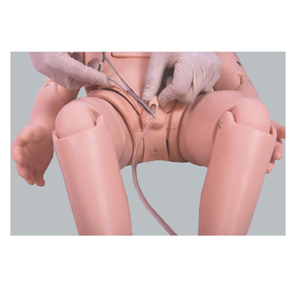

Article tag: Infant catheterization model| medical catheterization model|
Can infantile catheterization model really help improve medical skills? This is an issue that deserves to be explored in depth, especially in the field of medical education and clinical skills training.
...Can infantile catheterization model really help improve medical skills? This is an issue that deserves to be explored in depth, especially in the field of medical education and clinical skills training.
First of all, the pediatric catheterization model is designed to simulate the physiological structure and catheterization process of real children, so that medical staff can practice in a safe and low-risk environment. These models are usually made of high-quality simulation materials, which can highly restore key parts such as the urethra and bladder in children, so that medical personnel can feel the touch and feedback similar to the real operation during practice.

Secondly, by repeatedly using the pediatric catheterization model for practice, medical personnel can gradually familiarize themselves with the operation process, precautions, and possible difficulties and challenges of pediatric catheterization. This practical learning method is more intuitive and effective than simple theoretical learning, which can help medical staff to master urinary catheterization skills faster and improve operation proficiency and accuracy.
In addition, it is reusable, which means that medical staff can practice repeatedly in different periods of time until they have mastered the catheterization skills. This flexibility and convenience provides more learning opportunities for healthcare professionals, helping them to respond more confidently to situations in the real world.
More importantly, the use of models also reduces risk in real-world operations. Because the physiological structure of pediatric patients is relatively complex and fragile, medical personnel need to be extra careful when performing urinary catheterization operations. Through model exercises, medical staff can familiarize themselves with the operation process without harming patients and reduce possible errors and complications in actual operation.
To sum up, pediatric catheterization model does play an important role in medical education and clinical skills training. It can not only help medical staff to improve urinary catheterization skills, improve operational proficiency and accuracy, but also reduce risks in real operation, and provide patients with safer and more effective medical services